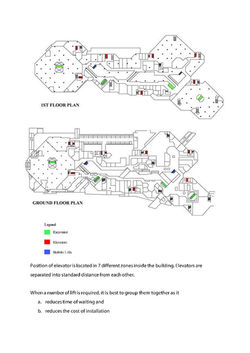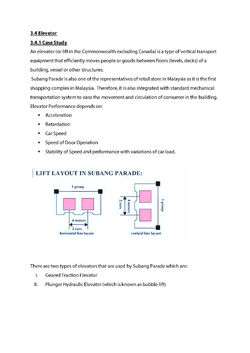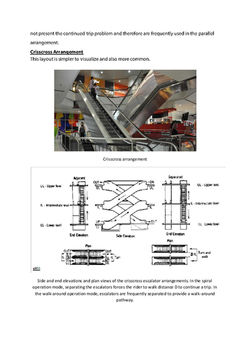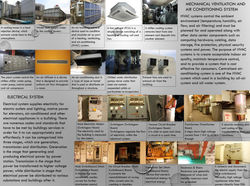Tan Woan Tyng
0312725
Taylor's University Lakeside Campus
School of Architecture, Building & Design
Bachelor of Science (Honours) (Architecture)


BUILDING SERVICES (ARC 2423)
Project 1
Application of Building Services
This project is related to the ours’ studio design project in the semester 2. We are expected to demonstrate their understanding of building services by proposing and designing the most appropriate systems for the building which include:
i) electrical supply system
ii) cold water and hot water supply system
iii) sewerage and sanitary system
iv) drainage system.
Therefore we are required to produce appropriate drawings and diagrams which include specifications, symbols, legends, images, etc. to describe the installation of all the building services. Additionally, specific clauses in the Uniform Building By-Law (UBBL) which relate to the proposed systems should also be cited.
The objective of this project is as follows:
1. To develop our understanding and knowledge of building services systems in design and construction.
2. To apply appropriate building services system and solution for a specific design.
3. To demonstrate a comprehensive understanding of applicability of specific building services system in the design in response to practical considerations
4. To develop students’ understanding and familiarity on the drawing conventions and standards for different building services systems



On completion of this assignment, we will be able to:
1. Propose a complete installation of appropriate building services systems for the students’ own design; cold and hot water supply, sewerage, sanitary and drainage systems as well as electricity supply.
2. Familiarize with the images of different components for each building services system proposed.
3. Produce drawings and diagrams of building services systems which relate to the design.
In this module students will be introduced to services that are commonly provided in a building, primarily cold and hot water supply, sewerage disposal and treatment, drainage and storm water management, electrical supply, fire protection systems, mechanical ventilation and air-conditioning systems as well as mechanical transportation systems. Students are also made familiar with the basic requirements, planning, coordination and installation of these services besides the regulations especially the ones related to Uniform Building By-Law (UBBL).
The teaching objectives of the module are:
1. To create awareness and understanding of the principles of services systems and to integrate the basic requirements such as plant room space, pump room, etc., in the schematic design stage.
2. To introduce various building services system that are available and the limitation of the choices – the services considered are primarily water supply, sewerage and sanitary system, mechanical ventilation and air conditioning system, electricity supply, fire protection system and mechanical transportation system.
3. To prepare students to adopt, apply and integrate these services requirements in their design work in later semesters.
Upon successful completion of the module, we will be able to:
1. Identify relevant information related to water supply, liquid waste disposal, mechanical air-conditioning, fire safety and vertical transportation system
2. Describe the planning of building services within the total design and construction process.
3. Describe the installation of building services within the total design and construction process.
4. Explain relevant information related to water supply, liquid waste disposal, mechanical air-conditioning, fire safety and vertical transportation system.
5. Explain principles, systems, space implications and regulations related to water supply, storm water and waste water disposal.
6. Explain principles, systems, space implications and regulations related to internal air quality and mechanical air conditioning.
Project 2
Case Study, Analysis and Documentation of Building Services Systems
In a group of 6 students in the same tutorial group.
Under the tutelage of a lecturer, each group is required to choose a building of at least 4-storey high which can be either public or commercial buildings (i.e. office blocks, institutional buildings, shopping malls, etc.). Each group is to perform a thorough study and analysis of the following services systems associated to the building. The purpose of this assignment is to give a clearer picture of what the students have learnt in the classroom and to evaluate their understanding on the systems that they have observed.
The requirements of the project are as follows.
Identify all the required building services components installed in the building.
Perform a thorough study on all the services systems;
i) mechanical ventilation and air conditioning system,
ii) electrical supply system,
iii) cold water supply system,
iv) sewerage and sanitary system,
v) mechanical transportation system, and
vi) fire protection system
Obtain estimate dimensions and sizes of the spaces required for all the equipment and plant rooms identified.
Provide brief explanation on how the building services components function. This explanation shall be in qualitative form and therefore no calculation is required.
Summarize the systems in diagrammatic form.
Click here to see the full pdf report
 Mechanical Transportation System-page-001.jpg |  Mechanical Transportation System-page-002.jpg |
|---|---|
 Mechanical Transportation System-page-003.jpg |  Mechanical Transportation System-page-004.jpg |
 Mechanical Transportation System-page-005.jpg |  Mechanical Transportation System-page-006.jpg |
 Mechanical Transportation System-page-007.jpg |  Mechanical Transportation System-page-008.jpg |
 Mechanical Transportation System-page-009.jpg |  Mechanical Transportation System-page-010.jpg |
 Mechanical Transportation System-page-011.jpg |  Mechanical Transportation System-page-012.jpg |
 Mechanical Transportation System-page-013.jpg |  Mechanical Transportation System-page-014.jpg |
 Mechanical Transportation System-page-015.jpg |  Mechanical Transportation System-page-016.jpg |
 Mechanical Transportation System-page-017.jpg |  Mechanical Transportation System-page-018.jpg |
 Mechanical Transportation System-page-019.jpg |  Mechanical Transportation System-page-020.jpg |
 Mechanical Transportation System-page-021.jpg |  Mechanical Transportation System-page-022.jpg |
 Mechanical Transportation System-page-023.jpg |  Mechanical Transportation System-page-024.jpg |
 Mechanical Transportation System-page-025.jpg |  Mechanical Transportation System-page-026.jpg |
 Mechanical Transportation System-page-027.jpg |  Mechanical Transportation System-page-028.jpg |
Mechanical Transportation System in Subang Parade
 |  |  |
|---|
On completion of this assignment, we learned how to:
1. Identify and understand relevant information related to water and electrical supply, sewerage, mechanical ventilation and air-conditioning as well as fire protection systems.
2. Understand how each building services functions including the connections and position of different parts equipment.
3. Understand and explain the principles and systems as well as space implications and regulations related to different building services.